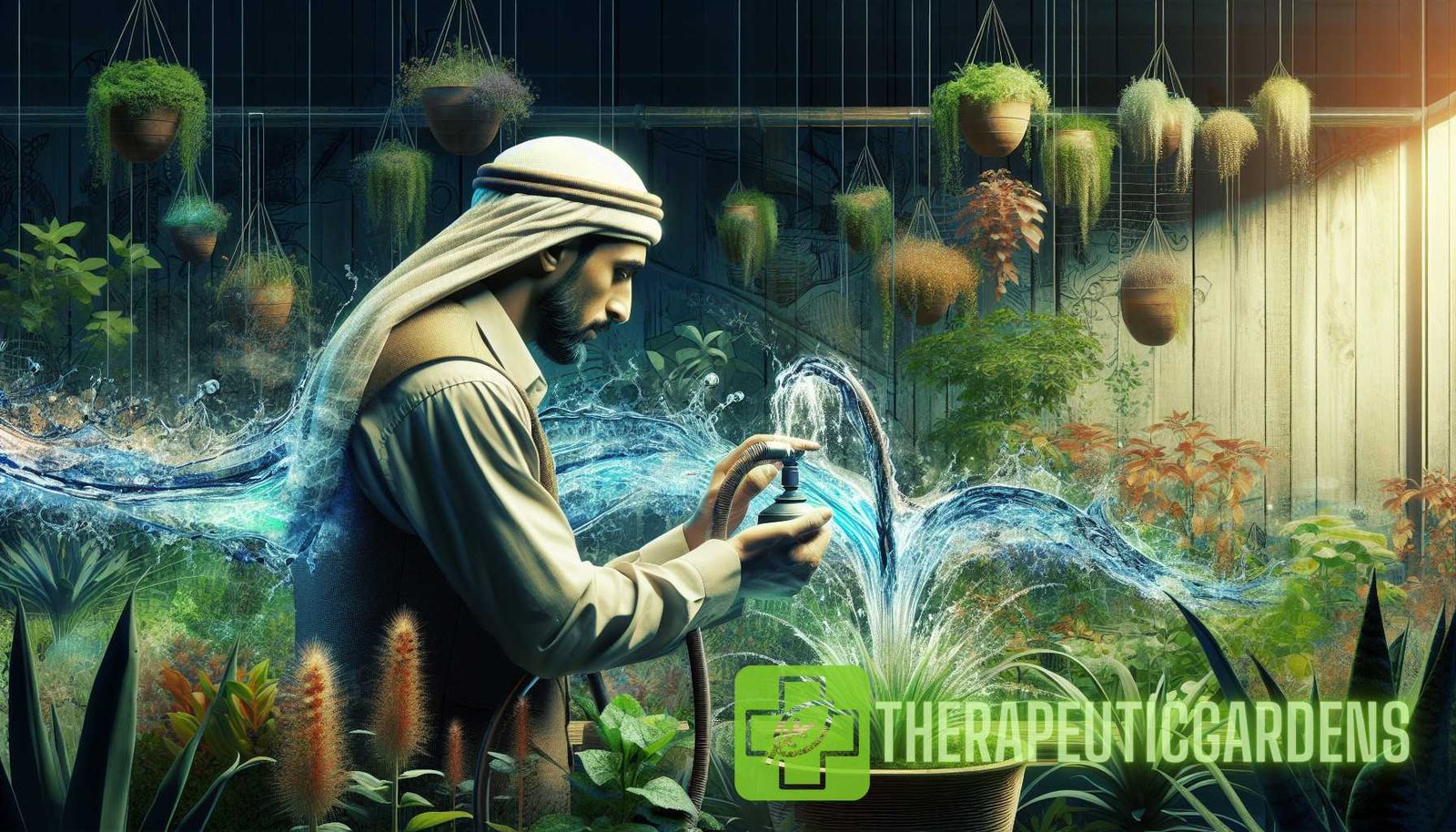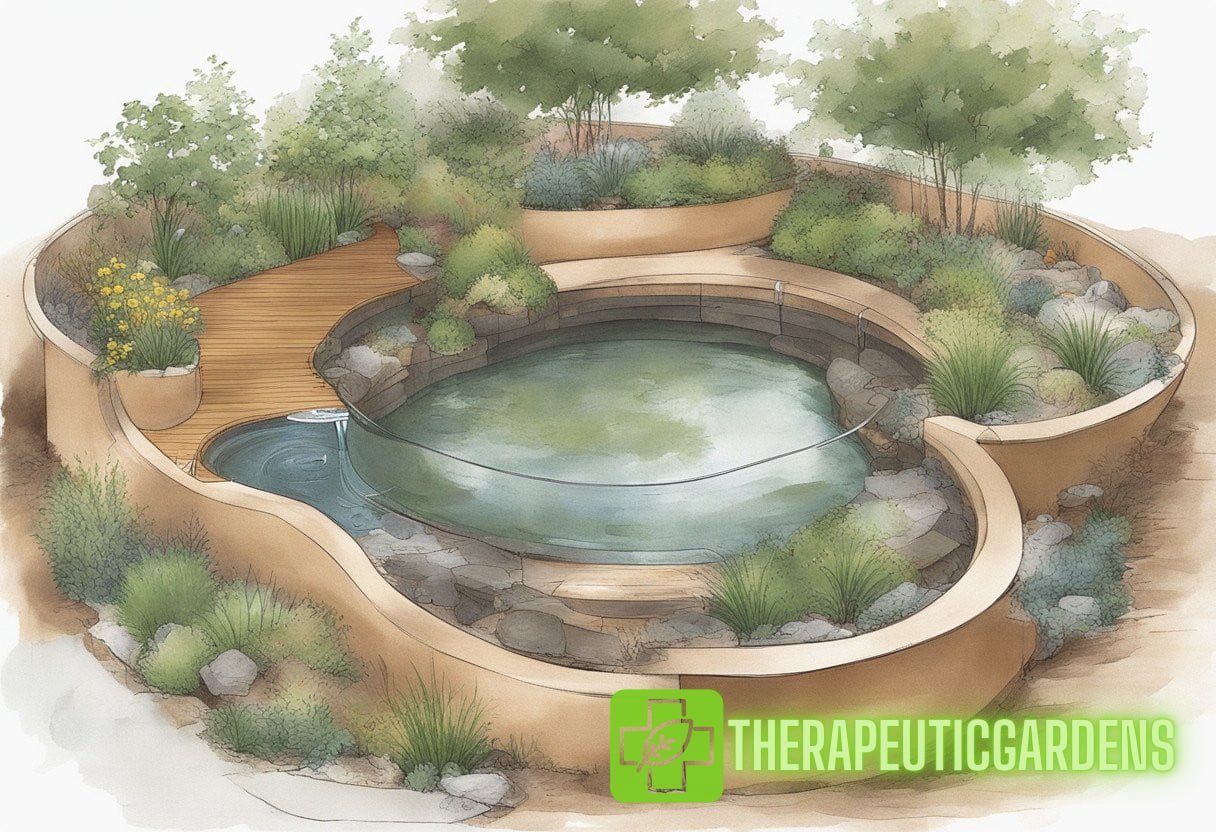Sustainable Gardening with Fluid Dynamics
Gardening is not only a joyful and peaceful pastime, but it can also play a significant role in promoting sustainability. With the increasing concerns over water scarcity and climate change, it is essential to adopt water-wise practices in gardening to conserve this precious resource. One way to achieve this is by incorporating the principles of fluid dynamics into therapeutic gardening. Fluid dynamics is the study of how fluids, such as water, flow and behave in different environments. By understanding the fundamentals of fluid dynamics, gardeners can optimize their practices to minimize water usage while maintaining a healthy and productive garden.
The Role of Water in Sustainable Gardening
Water is a crucial component of any garden, and its conservation is fundamental to sustainable gardening. By integrating fluid dynamics principles into gardening practices, gardeners can achieve effective water management, leading to reduced water consumption and enhanced water efficiency. Understanding how water moves and interacts with plants, soil, and surrounding elements is essential for maximizing plant health and minimizing water waste.
Fluid dynamics can help gardeners identify water-saving strategies and develop sustainable irrigation systems. By leveraging the principles of fluid movement, gardeners can make informed decisions about irrigation methods, watering schedules, and soil moisture levels. This knowledge allows for precise and targeted watering, minimizing water runoff and evaporation while ensuring that plants receive the right amount of moisture.
Optimizing Irrigation Systems with Fluid Dynamics
An important aspect of sustainable gardening is the efficient use of water in irrigation systems. Fluid dynamics provides valuable insights into designing and optimizing irrigation systems to minimize water waste.
One key principle that fluid dynamics emphasizes is the importance of uniform water distribution. By ensuring that water is evenly distributed across the garden, gardeners can prevent water pooling in certain areas, which can lead to soil erosion and wasted water. Different irrigation methods, such as sprinkler systems, drip irrigation, and soaker hoses, each have their own advantages and limitations when it comes to achieving uniform water distribution.
For instance, drip irrigation systems deliver water directly to the plant’s root zone, minimizing evaporation and water loss due to wind or sun. This method can be particularly effective in water-wise gardening, as it provides a slow and steady supply of water directly to the plants, reducing water runoff and promoting deep root growth. In addition, drip irrigation systems can be easily customized to individual plants’ water needs, ensuring efficient water usage.
Another irrigation method that can be optimized using fluid dynamics is the use of soaker hoses. These porous hoses allow water to seep slowly and evenly into the soil, ensuring that plants receive a steady supply of moisture. By placing the hoses strategically in the garden, gardeners can target specific areas that require irrigation while minimizing water waste.
Furthermore, the use of weather-based irrigation controllers can be a valuable tool in water-wise gardening. These controllers use weather data, such as temperature, humidity, and rainfall, to automatically adjust watering schedules and durations. By incorporating fluid dynamics principles into these controllers, gardeners can optimize the irrigation cycles to align with the specific water needs of their plants, minimizing water waste and promoting sustainability.
Understanding Water Movement in the Soil
Fluid dynamics can also shed light on how water moves through the soil and interacts with plant roots. This understanding is vital for sustainable gardening practices as it allows gardeners to optimize soil moisture levels and prevent water loss.
One crucial factor in water movement through the soil is soil permeability. Soil permeability refers to how easily water can pass through the soil particles. Different soil types have varying permeabilities, with sandy soil allowing water to flow more freely and clay soil retaining water for longer periods. By understanding the permeability of the soil in their garden, gardeners can adjust irrigation practices to ensure efficient water usage.
Another aspect of water movement that can be optimized using fluid dynamics is capillary action. Capillary action is the ability of water to move against gravity in narrow spaces, such as the tiny gaps between soil particles or through plant roots. By using capillary action to their advantage, gardeners can create sustainable watering practices that minimize water loss.

For example, planting deeply rooted plants can promote capillary action by allowing water to be pulled up from deeper soil layers to the surface, where it is accessible to plant roots. Additionally, mulching the soil surface with organic materials can help retain soil moisture and prevent evaporation, enhancing water-wise gardening practices.
Implementing Hydroponic Gardening for Water-wise Practices
Fluid dynamics can also be applied to innovative gardening techniques, such as hydroponic gardening, to optimize water usage and promote sustainability. Hydroponic gardening involves growing plants without soil, using a nutrient-rich water solution instead.
Fluid dynamics plays a crucial role in hydroponic systems by facilitating the circulation of the water solution and ensuring efficient nutrient uptake by the plants. By understanding the principles of fluid movement in hydroponic systems, gardeners can design and optimize their setups to minimize water waste and promote plant health.
Hydroponic gardening can be a highly water-efficient method of cultivation, as it eliminates the need for soil and allows precise control over water and nutrient delivery. By recirculating the water solution, hydroponic systems can minimize water loss due to evaporation and runoff, making them an excellent choice for sustainable gardening practices.
Furthermore, by employing advanced hydroponic techniques, such as aeroponics or nutrient film technique (NFT), gardeners can maximize water efficiency by providing targeted hydration directly to the plant’s root zone. These techniques use a minimal amount of water, ensuring that plants receive the necessary moisture while minimizing water waste.
Conclusion
Sustainable gardening is essential in promoting environmental conservation and preserving water resources. In incorporating fluid dynamics principles into gardening practices, gardeners can optimize water usage, maximize plant health, and minimize water waste.
By understanding how water moves and interacts with plants, soil, and surrounding elements, gardeners can implement water-wise practices such as optimizing irrigation systems, adjusting soil moisture levels, and utilizing innovative techniques like hydroponic gardening. These practices contribute to sustainable gardening efforts and help address the challenges of water scarcity and climate change.
Internal Links:
Learn more about sustainable gardening practices:
External Link:
For more detailed information on fluid dynamics, you can refer to Wikipedia’s article on fluid dynamics.

